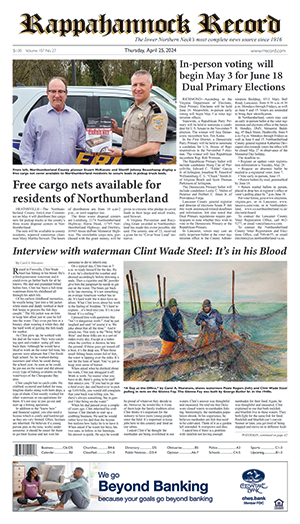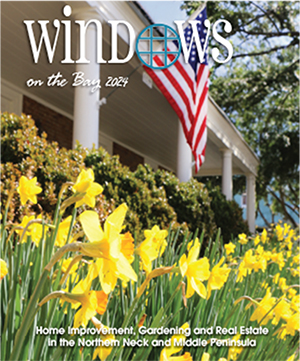Until the original Downing Bridge opened across the Rappahannock River in 1927, the Northern Neck was accessible only by water, or by bridge from the south only at Fredericksburg. As a result, we developed our own methods of speech. Although we were not as isolated as Tangier Island, we too formed our peculiar habits and expressions.
Most of our schoolteachers either were local or had come to the Northern Neck as the spouses of watermen and farmers. Regional dialects were important in identifying where folks originated, and those who spoke differently were recognized quite easily. My grandfather came to the Northern Neck from Jarvis, Ontario, in the late 19th century. He blended in quite well, to the extent that he served for two decades on the Colonial Beach Town Council.
He died before I was born, but when I visited Lower Ontario, I realized why he did not stand out down here. The people there speak with similar inflections to those that we use. I do not say identical because they are more clipped in their dialect. Interestingly, across the border in Upstate New York or across Lake Erie in Ohio or Pennsylvania, the accents are totally different.
Periodically, I describe some of our “unique-isms,” and here are a few to ponder.
The post office in Upper Lancaster County that bears the name of a crustacean, we pronounce Mollusk, with a long “o,” however the dictionary pronunciation is with a short “o.” Similarly, the former post office and community, along with the road leading to it, in Northumberland County is Mila, with a long “i.” Those from away from here pronounce it as if it were spelled “Meela.” Mila, pronounced Meela, is a Slavic name, which probably accounts for the confusion among some newcomers.
Many of our Northern Neck place names originated during the administration of President Theodore Roosevelt, when his Postmaster General, George von Lengerke Meyer, established the R.F.D., the acronym for Rural Free Delivery. In setting up the system, Meyer’s department chose in many cases to use four-letter names whenever possible to keep the system as simple as they could.
As an example, the crossroads near Mila in the name-giving era became Remo, a name presumably taken from the Italian city of San Remo, but without the San to keep to the four-letter rule. Here, the word is pronounced with a long “e,” but in Italy, the “e” is short.
On the border between Northumberland and Richmond counties is the village of Village. Before the Civil War, it was called Union Village, but the Union was dropped during Reconstruction. Closer to home, another “dropping” came here in Lancaster with the village of Lively Oaks, the Oaks being dropped. Apparently, the area had a strong presence of live oak trees, despite being this far north. Perhaps the dying off of the trees led to the dropping of the second word in the title?
In Westmoreland County, an important steamboat wharf on the Potomac River with its own post office, was Potomac Beach, which was also the Virginia terminus for the Morgantown Ferry across the river. True, it is on the Potomac, but it never had much of a beach, probably because of the proximity to the thriving Colonial Beach.
Also in Westmoreland are the two villages of Hague and Kremlin. Each is given without the article “the,” despite their namesakes in the Netherlands and Russia being The Hague and The Kremlin. Still, most people add “the” when referencing either place on this side of the pond.
Lastly, following in the linguistic tradition espoused by the late historian, C. Jackson Simmons, as I often have done, we live “in,” and not “on” the Northern Neck. To say “on the Northern Neck” is the purest form of identifying oneself as being newly arrived.












